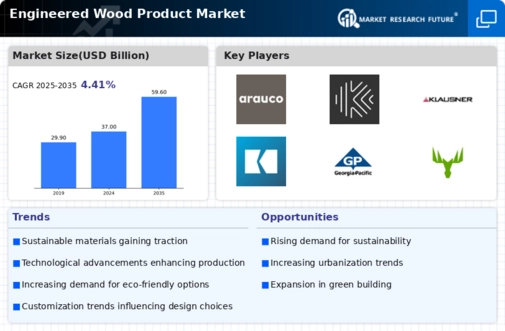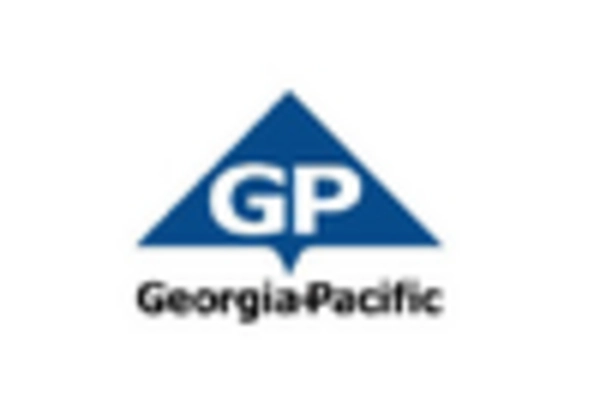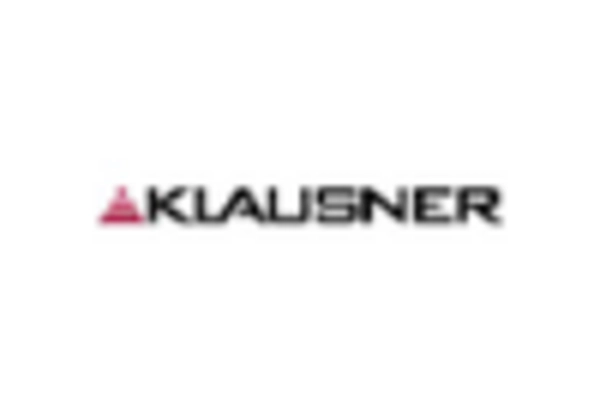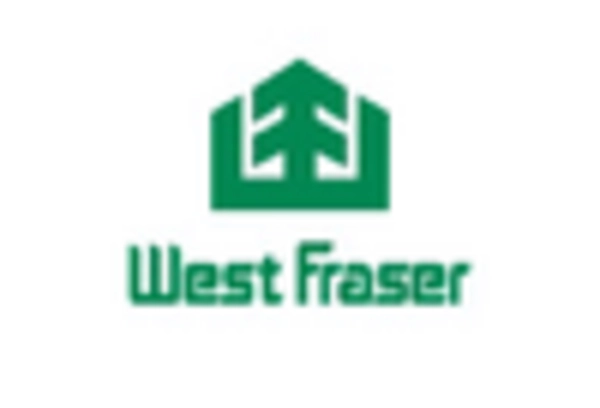Regulatory Support
Regulatory support is a crucial driver for the Engineered Wood Product Market. Governments worldwide are implementing policies that promote the use of engineered wood products in construction. These regulations often focus on sustainability, energy efficiency, and carbon reduction, aligning with global efforts to combat climate change. For instance, building codes are increasingly recognizing the benefits of engineered wood, allowing for taller wooden structures and incentivizing their use in public projects. This regulatory environment fosters growth in the Engineered Wood Product Market, as it encourages builders and developers to adopt these materials. The potential for government grants and subsidies for sustainable building practices further enhances the attractiveness of engineered wood products, positioning them as a viable alternative to traditional construction materials.
Urbanization Trends
Urbanization trends significantly influence the Engineered Wood Product Market. As populations migrate towards urban areas, the demand for housing and commercial spaces escalates. Engineered wood products, known for their lightweight and versatile nature, are increasingly favored in urban construction projects. The market is projected to expand as urban planners and developers seek efficient building solutions that meet the growing demand for space. Additionally, engineered wood products offer advantages such as reduced construction time and lower transportation costs, making them appealing in densely populated regions. This trend suggests a robust future for the Engineered Wood Product Market, as urbanization continues to drive innovation and demand for sustainable building materials.
Consumer Preferences
Consumer preferences are evolving, significantly impacting the Engineered Wood Product Market. There is a growing inclination towards aesthetically pleasing and sustainable building materials among homeowners and builders. Engineered wood products, which offer a combination of durability and design flexibility, are increasingly being specified in residential and commercial projects. Market data indicates that consumers are willing to invest in higher-quality materials that contribute to energy efficiency and sustainability. This shift in consumer behavior suggests a potential increase in demand for engineered wood products, as they align with modern architectural trends and environmental consciousness. As preferences continue to evolve, the Engineered Wood Product Market is likely to adapt, offering innovative solutions that cater to the desires of discerning consumers.
Technological Innovations
Technological innovations play a pivotal role in shaping the Engineered Wood Product Market. Advancements in manufacturing processes, such as cross-laminated timber and glulam, enhance the structural integrity and aesthetic appeal of engineered wood products. These innovations not only improve product performance but also reduce waste during production. The market is witnessing a surge in the adoption of digital tools and software for design and manufacturing, which streamlines operations and increases efficiency. As a result, the Engineered Wood Product Market is expected to see a rise in productivity and a decrease in costs. Moreover, the integration of smart technologies in construction, such as IoT and automation, could further revolutionize the industry, making engineered wood products more attractive to builders and architects alike.
Sustainability Initiatives
The Engineered Wood Product Market is experiencing a notable shift towards sustainability initiatives. As environmental concerns gain traction, manufacturers are increasingly adopting eco-friendly practices. This includes sourcing timber from sustainably managed forests and utilizing recycled materials in production. The market is projected to grow at a compound annual growth rate of approximately 6% over the next few years, driven by the rising demand for sustainable building materials. Furthermore, regulatory frameworks are evolving to support sustainable construction practices, which may further bolster the Engineered Wood Product Market. Consumers are also becoming more conscious of their choices, favoring products that align with their values. This trend indicates a potential for increased market penetration of engineered wood products, as they are often perceived as a greener alternative to traditional materials.


















Leave a Comment